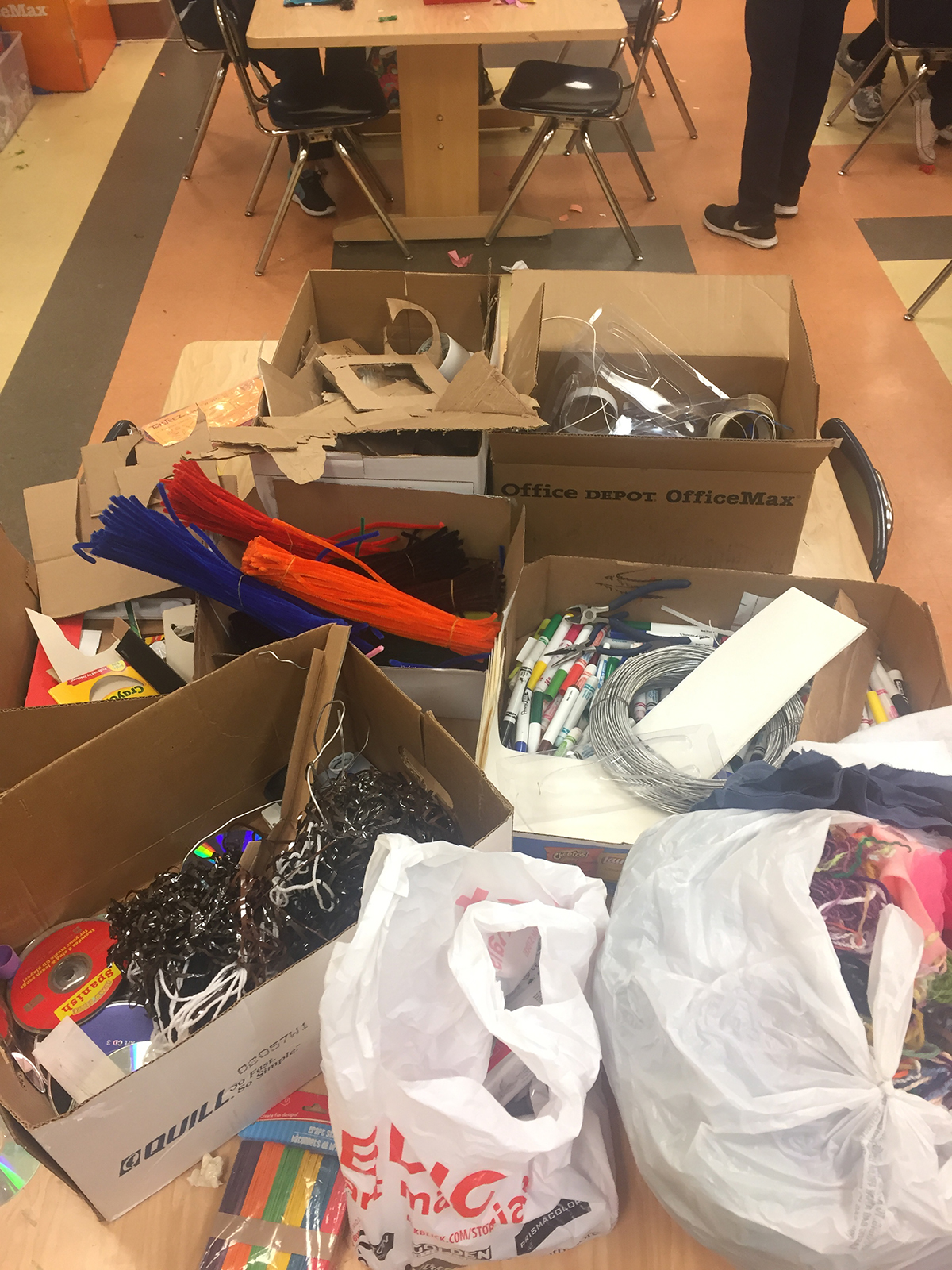Sculpting Trophies for our Special Teachers
By Claire Reynes
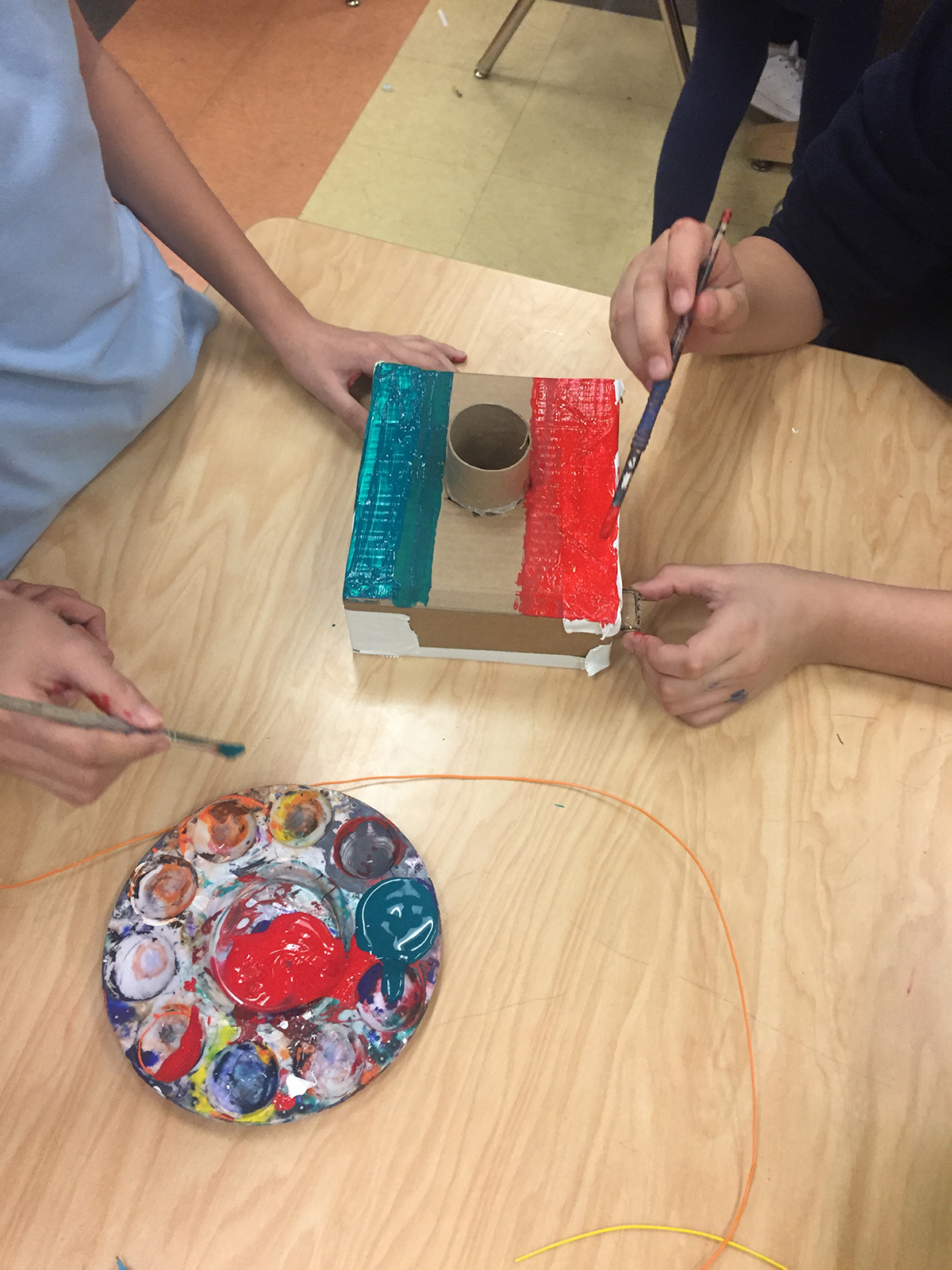
When asked to describe their community, 6th grade students initially tended to define the deficits of their school experience. The teacher posed an inquiry to them about what assets might be found if we all investigated together. As students began to look around for the most positive parts of their day, they saw clearly that this was found in the teachers and staff who bring Mark Twain Elementary to life and support them as learners. After visiting the MCA and studying conceptual approaches to participatory art, students decided to show appreciation for their teachers through sculpting trophies. They developed research to inform the objects, and designed an interactive theatrical plan for illuminating the meaning of each award and recognizing the unique value of each teacher and staff member.
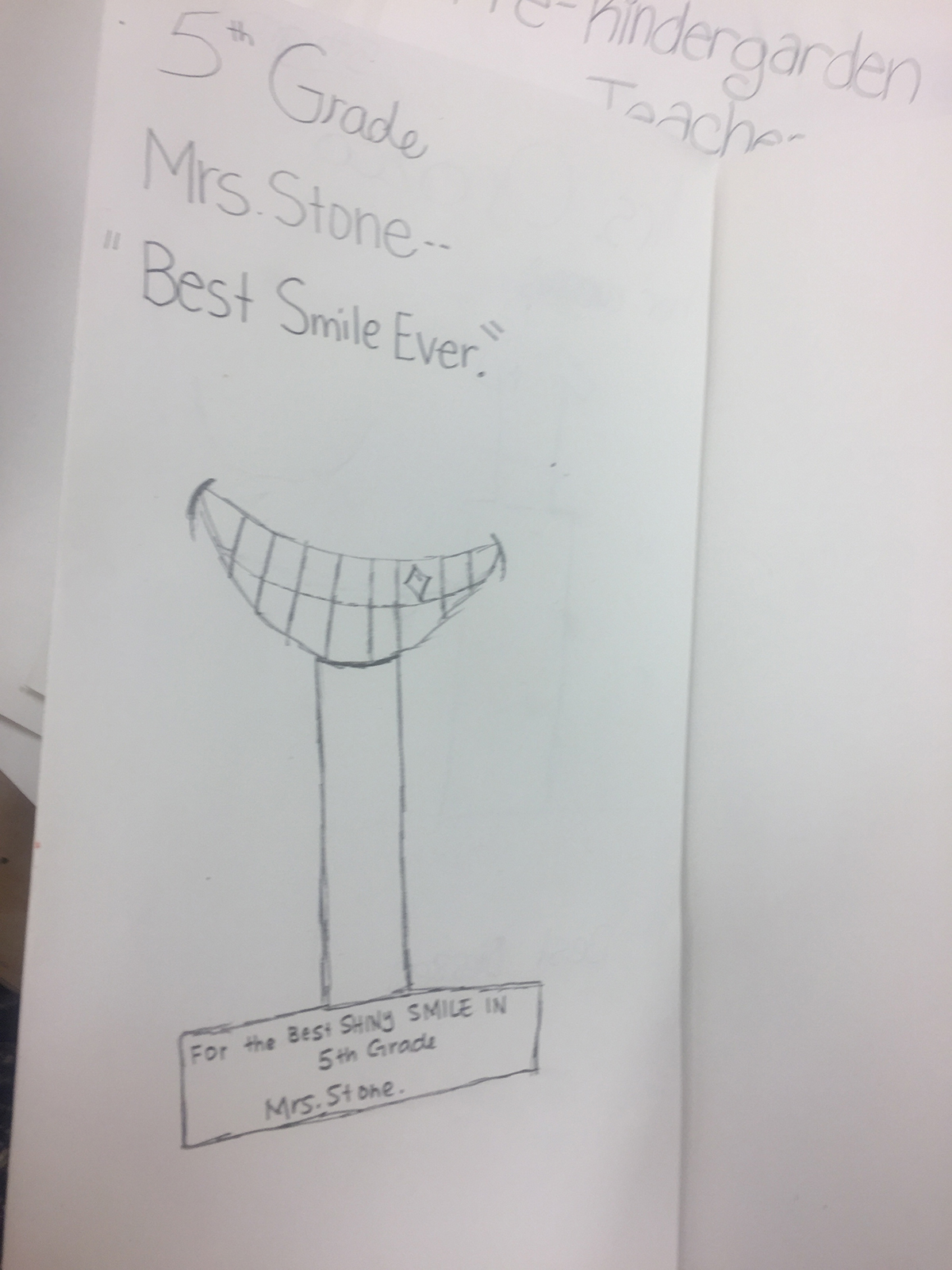
Goals and Objectives
- Students will investigate the positive assets of their school.
- Students will respond to their own investigations through art.
- Students will involve the school community in spreading appreciation for community assets, in this case the teachers and staff they admire.
Guiding Questions
- How do we show appreciation?
- How do artists use objects to communicate ideas?
- How can we use research to directly inform artmaking?
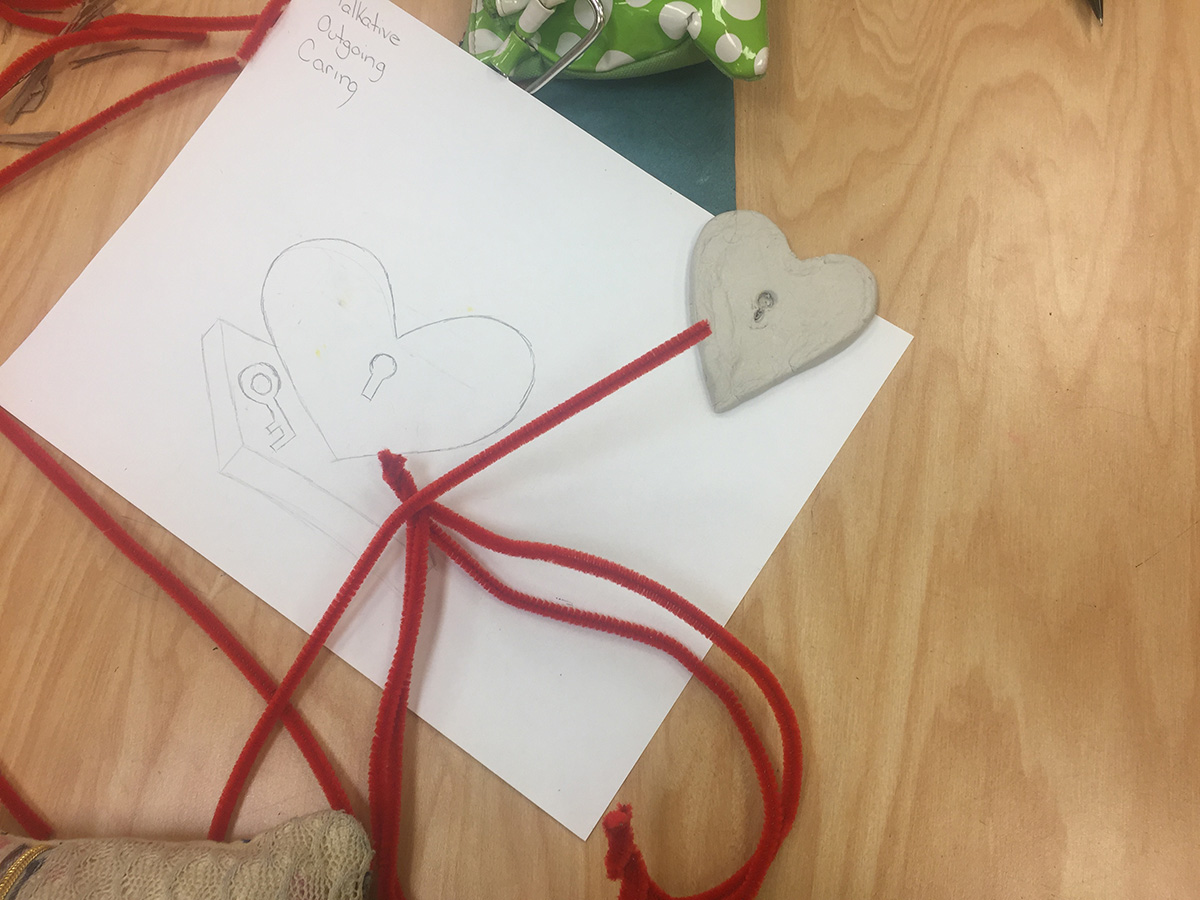
Documentation + Assessment
- Selected students took pictures during the creation phase of the project. This was to document the creative process while students worked in pairs to create their sculptures.
- Student pairs sketched and wrote about the teacher receiving the award to gather ideas.
- As students presented their awards, the “photographer” students followed to take photos and video.
- Students designated as “reporters” followed up with teachers with a couple of interview questions to gauge the teachers’ experiences of receiving awards.
- Students wrote reaction statements to photographs and videos after the award presentations were finished.
Learning Activities
Step 1
Identifying Community Assets
Invite students to discuss the positive qualities of their school. From this critical dialogue, students can determine that the teachers and staff are the most positive forces in their community life, and decide to center their projects on these individuals.
Step 2
Introducing Socially Engaged Art
Invite students to alternate activities between dialogue, studio explorations (especially photography and video), and viewing examples of contemporary socially-engaged art projects.
Step 3
Visiting the MCA
Present the work of Andrew Yang and other contemporary artists who use found materials. As they began to design trophies, students gravitated towards found and recycled materials.
Step 4
Reaching Consensus
Over time, the teacher synthesizes the work from the developmental studio and discussion processes described in Step 2 to help students identify the central idea of creating objects to show appreciation to teachers.
Step 5
How can we use art to show appreciation?
Lead students in brainstorming various possible studio strategies for demonstrating appreciation in a participatory way. Students can decide to create unique sculptural trophies for each teacher.
Step 6
Researching Content
Lead students in designing a survey for each classroom and collecting information about each teacher. Show them how to translate the data into visual sculptural forms as trophies, and create stars for each staff member.
Step 7
Production
In studio production, students should experiment with found materials such as felt, wire, and clay. They should discuss their designs as they work to create the right symbolic representation to appreciate the special qualities of each teacher. Students can also create any accessories for their presentations, such as a backdrop banner.
Step 8
Performance Planning for Awarding Teachers
Ask students to distribute the awards they have created to each teacher in a celebratory way during the school day. The teacher and students may decide to create 4 specific roles: presenters, reporters, paparazzi, and stage crew.
Step 9
The Big Reveal!
Having practiced their roles in the art classroom, students visit each teacher. While there, the “stage crew” can hold up the backdrop banner behind each teacher, the “presenters” hand out the award and stated the reason the teachers were receiving the award, the “paparazzi” can use iPads to photograph the event, and the “reporters” can interview the teachers about how they felt about receiving the award.
Step 10
Reflection
Lead students in reflecting on the meaning of the experience of sharing their appreciation for teachers through art.
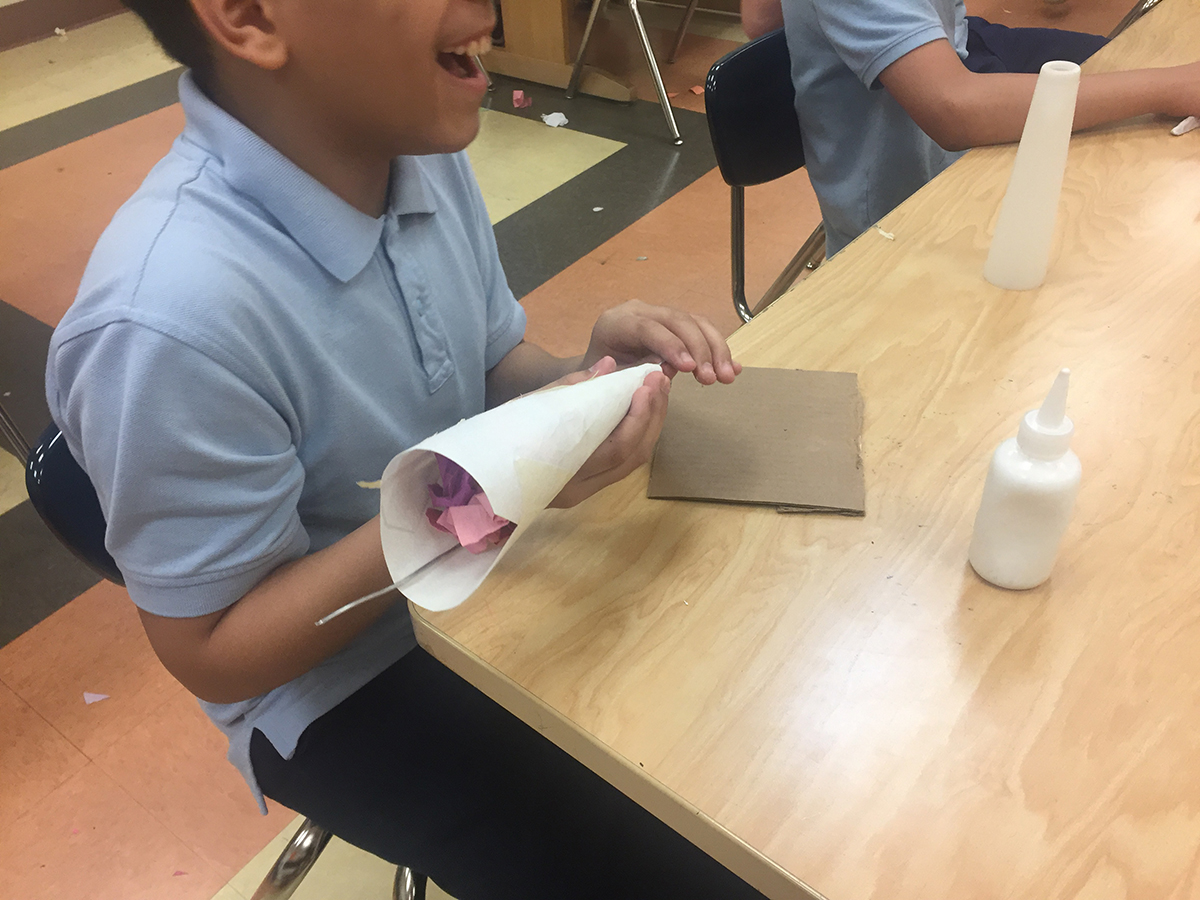
Materials
- iPads
- Banners, paints, and brushes
- Recycled/found materials: cardboard, cds, cassette tapes, pellon/fabric scraps, dried markers
- Modeling clay
- Wire
- Pipe Cleaners
- Felt, yarn
- Hot glue
MCA Connections
Students visited the exhibition of Andrew Yang at the MCA and spent time looking at his objects, which were the most relevant artworks to the current thinking of the students. I think at that age, students are very materialistic in a particular sense: physical objects make sense to them and have meaning. A lot of my students are collectors and were not aware of it until they saw the display of Yang’s collection. It was helpful to see how certain objects were not what they seemed, and while something might look like a rock, it does not mean that it is a rock. Students applied a lot of this same thinking to the sculptures they created by disguising recycled materials as precious, handmade “trophies.”

References + Resources
Claire Reynes
Mark Twain Elementary
Claire Reynes is a Chicago-based artist, papermaker, and educator. Her artmaking practice involves handmade paper and papermaking components, including pulp painting and image transfers, as a base upon which she builds, layering medium and texture. She enjoys exploring different fibers used for making paper and tries to incorporate natural elements and plant material when she can. She often draws with pen and ink on the paper and completes the piece with embroidery. The focus in most of her work is the human body and spirit, the relationship between the two, and the effect of emotion visible in the physique. Claire currently teaches art for 3rd through 8th grade at Mark Twain Elementary in Chicago. She also facilitates on-site papermaking and paper art workshops around the Chicago and Oak Park areas.
Claire reflects on her process:
Initially, the process felt like taking a step backward for every step forward because the classes were not able to directly communicate with each other. In the end though, the process allowed for students to experiment more because they were not too confined by a plan, because the project was evolving every day with each new class. I got to be an observer and push students further into their own ideas, trying not to offer too many of my own. It was so exciting to see the students being inspired by each other. And the best part is looking at the photos that the students took while they presented the awards to the teachers. The teachers are so surprised and happy, which, I think, was the gratification that the students needed to bring the project full circle. I realized too that the whole process, as scary, frustrating, and fruitful as it was, brought me closer to the classes that I was working with, because we were all lost together most of the way through.
